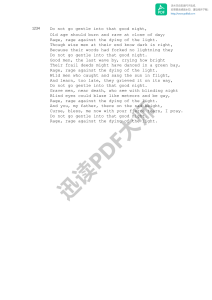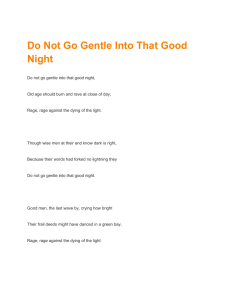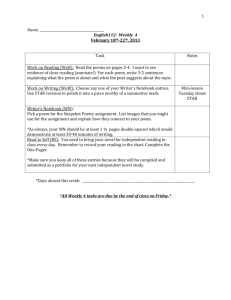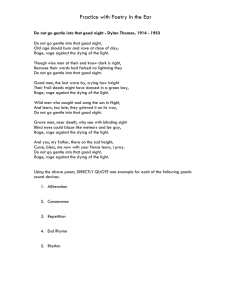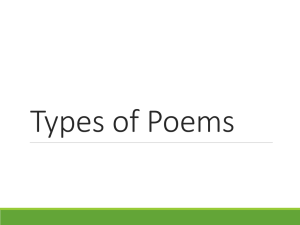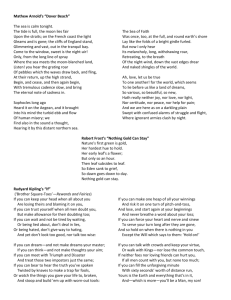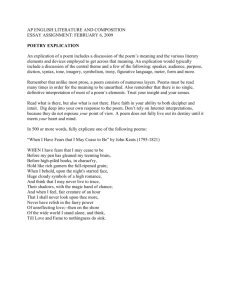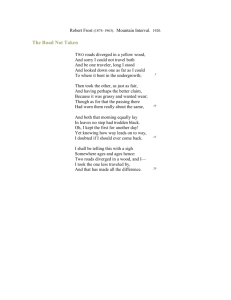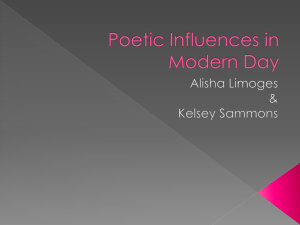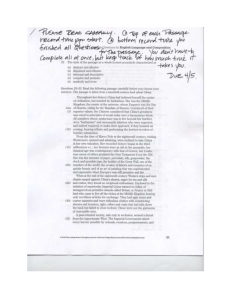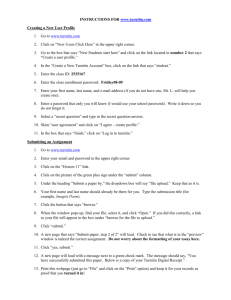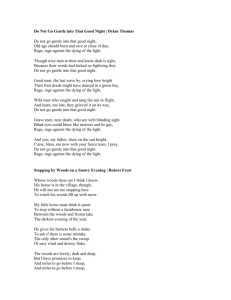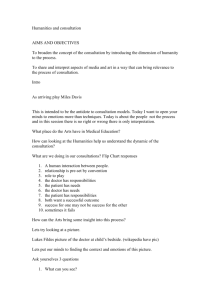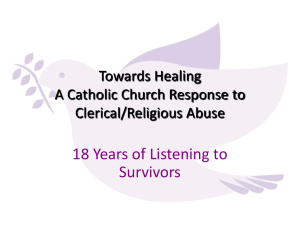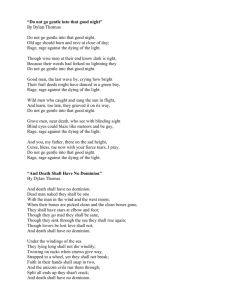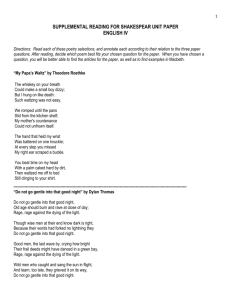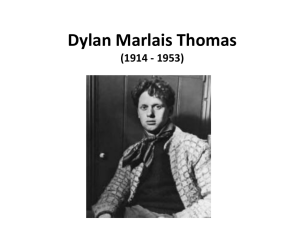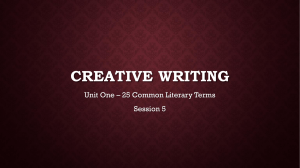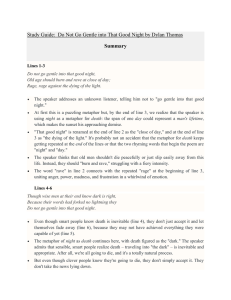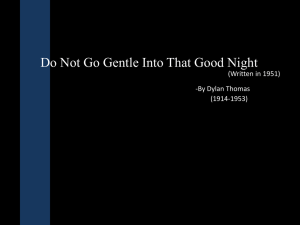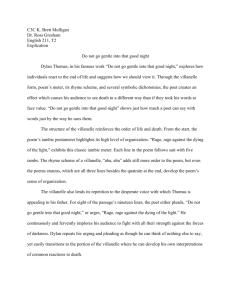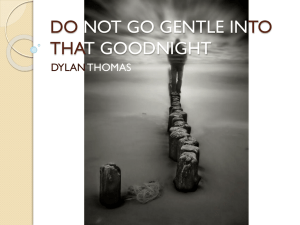Do Not Go Gentle into That Good
advertisement
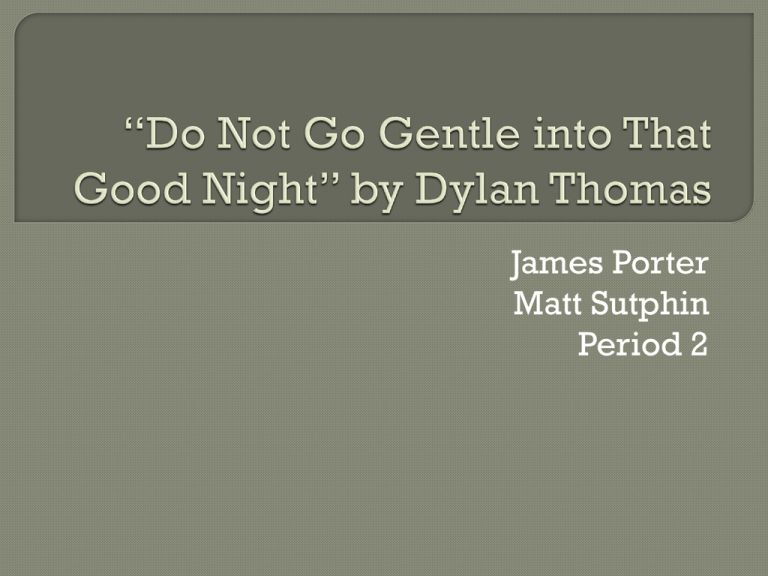
James Porter Matt Sutphin Period 2 “ Do not go gentle into that good night, Old age should burn and rage at close of day; Rage, rage against the dying of the light. Though wise men at their end know dark is right, Because their words had forked no lightning they Do not go gentle into that good night. Good men, the last wave by, crying how bright Their frail deeds might have danced in a green bay, Rage, rage against the dying of the light. Wild men who caught and sang the sun in flight, And learn, too late, they grieved it on its way, Do not go gentle into that good night. Grave men, near death, who see with blinding sight Blind eyes could blaze like meteors and be gay, Rage, rage against the dying of the light. And you, my father, there on the sad height, Curse, bless me now with your fierce tears, I pray. Do not go gentle into that good night. Rage, rage against the dying of the light.” Born on October 27, 1914 Resided in South Wales Became a junior reporter for the South Wales Daily Post Left his job to become a poet at age 18 Published a book called “18 Poems” Won the Poet’s Corner book prize 1930s Modernism People rejected Realism Modernists were inspired by the Russian Revolution People began to rely on things such as electricity, automobiles, and telephones Thomas wrote this poem about his father, who was very ill at the time Thomas is telling his father to fight his illness and stay alive It describes the lives of four different men who are facing death Villanelle; 5 three line stanzas and 1 four line stanza at the end Metaphor: night=death, light=life Symbolism: burning=attitude the old should have against losing their life “Blind eyes could blaze like meteors” (line 15) is a simile. Thomas thinks that men see to late that they were blind to many things. “Blind eyes could blaze” is also an example of alliteration. Symbolism: “The dying of the light” = a person’s life coming to an end Thomas uses “good light” to reveal death. Villanelle is supposed to be used light heartedly but Thomas uses it to talk about “rage” and “going into the good night” or dying. Thomas uses “good” to describe death while telling his father to resist death. The man understands he must die but his mind does not quiet his reluctance. The Poem contains an ABA Rhyme scheme for the first part and an ABAA Rhyme scheme for the final quatrain. ”go, good (Stanza 1); though, their (Stanza 2); deeds, danced (Stanza 3) ”These are all examples of alliteration throughout the poem. ”age, rave, day (Stanza 1)” are examples of Assonance throughout the poem. We think the is Theme is don’t give up when you are dying. Thomas is encouraging his father not to give up and this same thing applies to us. Another theme to this poem is that life is joyful and precious. The way Thomas describes life makes it seem happy. Do you think that any mind can truly be at peace when they know they are going to die soon? Do You agree with the way Thomas describes death?
